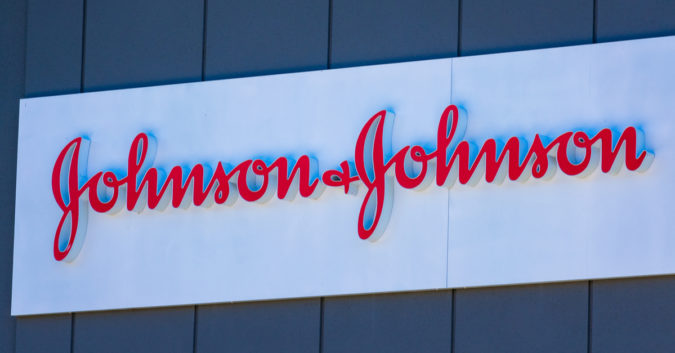In 2019, a New Jersey jury ordered Johnson & Johnson (J&J) to pay $37.3 Million to 4 plaintiffs who attributed their mesothelioma to the company’s talc-based products. Now, a second jury, convened in January to determine if J&J should pay additional damages because of its conduct, has ordered the company to pay $750 Million in punitive damages.
The jury’s decision, like others in talc lawsuits across the country, hinged on internal company documents that demonstrated how J&J knew and covered up evidence that its talc products were contaminated with asbestos, a toxic mineral which causes mesothelioma.
Though the company insisted it had done nothing wrong, the jury voted for a massive penalty that would send J&J a clear message: Stop lying to consumers.
New Jersey Superior Court Judge Ana C. Viscomi said she planned to reduce the amount of punitive damages to $186.5 Million. Viscomi cited state law that limits punitive damages to 5 times the amount of compensatory damages awarded jury last year, in the first phase of the trial.
According to October filings with the Securities and Exchange Commission (SEC), approximately 16,800 plaintiffs have filed lawsuits against J&J alleging that its talc products caused their mesothelioma or ovarian cancer.
The New Jersey trial marked the first time that J&J CEO Alex Gorsky has testified in open court to defend his company’s questionable conduct. It appears that his word failed to sway the jurors, who saw the evidence J&J successfully kept hidden for so long.
How Does Baby Powder Lead to Mesothelioma?
Asbestos often exists in the same mines as talc, which is a key ingredient in Johnson’s Baby Powder®, Shower to Shower, and other cosmetic products.
Talc is most often mined by blasting, and even with careful site selection, it is extremely difficult to ensure that no asbestos is present. Some experts, including those who worked for J&J, have argued it’s impossible.
For years, though, J&J claimed that its talc products were 100% pure and free of asbestos, which is dangerous even in trace amounts. Both the Environmental Protection Agency (EPA) and the World Health Organization (WHO) have stressed that there is “no safe level” of asbestos exposure.
Unfortunately, the company was lying about the safety of its products. Internal documents reveal that J&J had found evidence of asbestos in its talc mines, but they never told regulators or the public.
Instead, they tried to purify their products in secret. When that failed, they came up with a way to test talc that wouldn’t detect trace amounts of asbestos. They successfully lobbied the government in the 1970s, and for nearly 50 years, an ineffective test became the industry standard.
Meanwhile, millions of consumers used products like Johnson’s Baby Powder on a daily basis, sometimes multiple times a day. They bought into J&J’s marketing, which deceived them into thinking that they were using “pure” and “safe” talc products. The truth was that people were inhaling asbestos or applying it to sensitive parts of their bodies, often for years at a time.
J&J knew that its talc products were putting consumers at risk of mesothelioma, ovarian cancer, and other horrific asbestos-related diseases. While the company debated in private about how to resolve the asbestos-talc issue, it left the public in the dark.
FDA Revisits Talc Testing Standards Amid Cancer Fears
In October 2019, the Food and Drug Administration (FDA) detected asbestos in a bottle of Johnson’s Baby Powder. In addition to triggering a first-ever recall of the company’s iconic powder, the finding initiated a tense back-and-forth between J&J and the federal agency.
The company attacked the FDA’s results and hired third-party labs to do their own testing. Despite claims that no asbestos was present in the J&J tests, the FDA has repeatedly stood by its original finding.
Much of the debate hangs on talc testing methods and what counts as asbestos during screening. Conventional testing methods, the ones J&J and the industry pushed for in the 1970s, are far from the most sensitive testing methods available. Given the risk that even trace amounts of asbestos can pose to consumers, this makes little sense.
Now that asbestos has been found in baby powder, children’s makeup, and other cosmetic talc-based products, the regulations may change. On Feb. 4, the FDA revisited the testing standards for asbestos in talc for the first time in nearly 5 decades.
The hearing was focused on recommendations submitted by an expert panel from the Interagency Working Group on Asbestos in Consumer Products (IWGACP), which was formed to help federal regulators come up with testing methods for asbestos that will keep consumers safe.
One of the major recommendations discussed at the hearing concerned hazardous fibers in talc known as elongated mineral particles, or EMPs. Although these mineral particles are not asbestos, the panel argued that they can cause cancer and other diseases.
Christopher Weis of the National Institute for Environmental Health Sciences said that EMPs in talc pose serious risks to consumers. “Short EMPs are not conventionally counted or included in lab reports,” he said at the hearing. “As a toxicologist, this is unacceptable.”
The FDA has promised to continue studying the issue but has not announced if it will be issuing new rules. At the hearing, Scott Faber, from the watchdog Environmental Working Group (EWG), urged action:
“It’s time to end the honor system which has failed consumers for so long. . . Let’s not wait another 50 years to finally protect consumers.”
Expecting companies like J&J to act in the interests of consumers without oversight has left tens of thousands of people exposed to asbestos. The FDA has a golden opportunity to prevent more Americans from developing cancers and other asbestos-related diseases.
As a law firm that has advocated for thousands of mesothelioma survivors, we hope that the government will follow the advice of its experts and close the toxic talc loophole once and for all.
